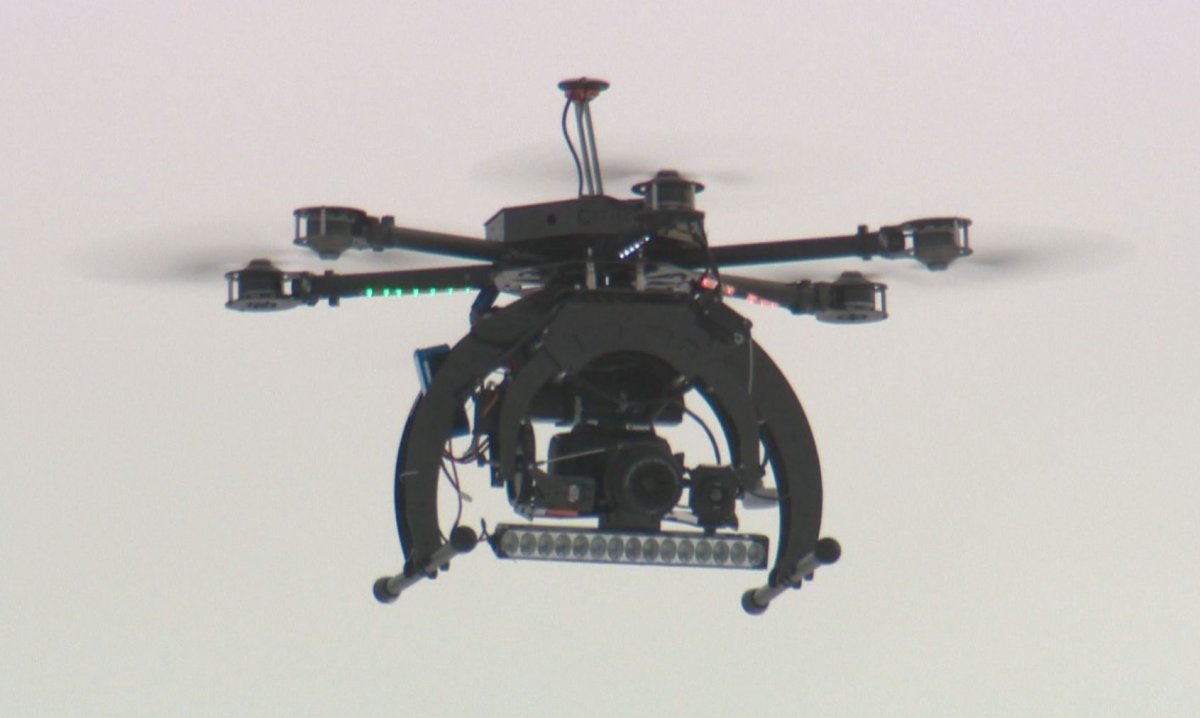WATCH ABOVE: Edmonton’s traffic collision investigators have their own aircraft and they say it’s already paying off. Fletcher Kent explains.

EDMONTON – It’s called an Unmanned Aerial Vehicle and the Edmonton Police Service is using the technology to help investigate serious collisions.
The UAV, commonly known as a “drone”, is providing police with data for collision reconstruction and effective courtroom testimony. Edmonton police say information gathered by the drone is allowing investigators to measure and examine tire marks, distances and lines of sight during collision investigations.
The service showed off its new tool on Tuesday morning.
“It’s actually changed the way we were able to do business,” said Const. Binoy Prabhu, lead of the UAV program. Prabhu may have fun using the drone, but he’s not playing with a toy.
“The UAV can take specific scene data and evidence which we can then use for forensic measurement that assists major collision investigators,” Prabhu added.
The $27,000 drone is much like a mini helicopter. It contains a flight data recorder, a powerful search light, thermal imaging technology and a remote-controlled digital SLR camera.
The Edmonton police Traffic Section first thought about using an UAV in January 2014. It received its Transport Canada operations certificate in June 2014, and has since used the Unmanned Aerial Vehicle in 15 major collision investigations, including a rollover which led to the first ever manslaughter charge laid by the traffic section.
Operation of the drone requires proper permits and pilot training. Flight plans must be filed to notify other pilots operating in the area.
Three police officers are trained to operate the drone and four officers are receiving training. The UAV needs a pilot and spotter to be operated and it has to be kept in sight.
Edmonton police may eventually expand the role of their drone, but there are limitations: it can only be in the air for about 12 minutes, and can’t go more than 609 metres (2000 feet) from the operator. For that reason it won’t replace the Air One and Air Two helicopters, but it is a welcome tool for traffic investigators.
The RCMP have used drones to investigate traffic collisions for a few years, but have since expanded the drone’s role. In September 2013, investigators flew one over the Samson Cree Nation in central Alberta to look for clues in the Chelsea Yellowbird homicide.
READ MORE: Hobbema RCMP investigate two-year-old murder case with help of new technology
Photos from the UAV were used to build a 3D drawing of the crime scene. In the months that followed, three people were arrested and charged with first degree murder.










Comments